What is a Tandem Garage? Benefits, Drawbacks, & Types
Author: Rick Worst | Editor: Omar Alonso
Review & Research: Jen Worst & Chris Miller
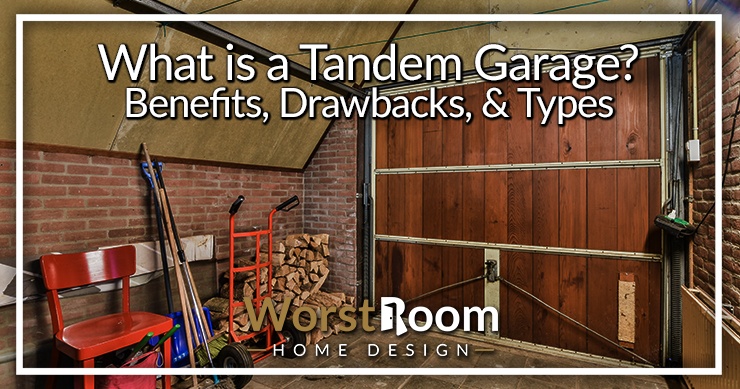
In today's space-savvy world, tandem garages are quickly becoming an efficient and popular choice for homeowners seeking to optimize their parking. But what is a tandem garage, exactly?
A tandem garage is a type of garage designed to accommodate two vehicles parked longitudinally, one behind the other – unlike the side-by-side arrangement found in regular double garages.
Tandem garages offer increased storage space, enhanced maneuverability, cost efficiency, and curb appeal as compared to traditional garages.
Different types of tandem garages are available, such as standard tandem garages, side-by-side tandem garages, stacked tandem garages, and two-story tandem garages.
You must consider factors such as lot size and local building codes before choosing one. Tandem garages can be an excellent solution for homeowners seeking to optimize their parking arrangements while utilizing limited space efficiently.
In this article, we will delve into the key characteristics that distinguish tandem garages from typical ones and explore their various benefits, types, and considerations when choosing such a layout.
What Are Tandem Garages?
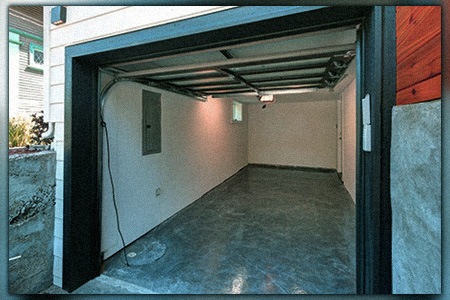
Tandem garages are meant to fit two vehicles, with one parked behind the other, arranged longitudinally. This is a specific definition that only captures the general aspects of a garage and not details concerning maximum or minimum dimensions, etc.
Features of a Tandem Garage
A tandem garage works because it provides a unique and space-efficient parking arrangement for multi-car households. The defining characteristic of a tandem garage lies in its linear parking setup, allowing vehicles to be parked one behind the other.
This longitudinal design makes tandems deeper and skinnier than standard garages, whose design allows cars to park side by side.
Such design characteristics make tandem garages particularly advantageous when dealing with narrow tracts of land or limited building space.
For instance, urban property owners interested in maximizing their available lot area may opt for this garage organization as a car storage solution and a way to increase their property’s value.
Similarly, families with multiple vehicles can benefit greatly from having a neatly organized space that fits more cars without compromising aesthetics or functionality.
Difference Between Regular & Tandem Garages
Tandem garages and regular garages each cater to unique storage needs and preferences for homeowners. The primary difference between the two lies in their design, dimensions, and ability to accommodate vehicles.
A standard garage is typically wider, rather than deeper, offering enough space for one or two cars parked side by side. So what is a tandem garage?
This distinct design of tandem garages presents various advantages over traditional ones, like maximizing space on narrow tracts of land while providing increased storage capabilities - similar to how a galley kitchen efficiently utilizes limited areas compared to an everyday kitchen.
For example, imagine trying to park three cars in a typical double garage. Getting into the third car would require moving one or both vehicles first.
In contrast, a well-designed tandem garage can easily fit three cars without sacrificing accessibility or requiring additional maneuvering when parking your vehicles.
Benefits of Tandem Garages
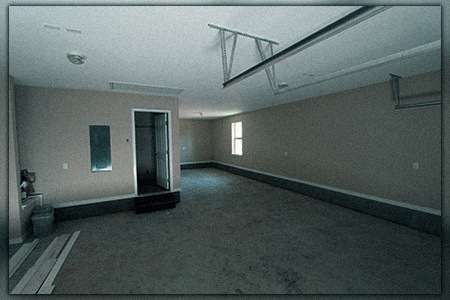
Tandem garages offer increased storage space, enhanced maneuverability, and cost efficiency.
Increased Storage Space
One of the most notable benefits of tandem garages is increased storage space. You can maximize storage space for your vehicles and other tools and equipment.
Unlike traditional garage designs, tandem garages have a longer and narrower layout, allowing homeowners to park multiple cars in a row without occupying as much space on their property.
In addition to accommodating multiple vehicles, you can use this extra storage space creatively to implement efficient garage organization solutions. For instance, you could install overhead racks or shelving systems along the walls to maximize vertical storage capacity further.
With an organized space-saving system within your tandem garage, you will find it easier to access your belongings while maintaining an orderly environment for parking your cars securely indoors.
Enhanced Maneuverability
One of the most significant benefits of a tandem garage is enhanced maneuverability. Because of its narrow and deep design, it allows homeowners to park multiple vehicles in a single space without compromising their mobility.
Unlike traditional garages that require drivers to back out onto the street or driveway, tandem garages allow easy exit through the forward-facing door. This feature is helpful for households with high traffic demands.
If you have teenagers who are always on the go, this design helps minimize friction between the different drivers.
Additionally, you can design tandem garages to enable easier access to stored items such as bikes, sporting equipment, or tools by providing ample clearance between the parked cars.
Cost Efficiency
One of the significant benefits of a tandem garage is its cost efficiency. Unlike traditional double garages, tandem garages are narrower and require less pavement space, making them a more budget-friendly option for homeowners.
Moreover, if you plan to sell your home, investing in a tandem garage could result in higher returns on investment since they provide additional parking without taking up extra lot space.
With the skyrocketing costs of property prices today, every inch matters when it comes to outdoor living spaces and storage capacity. Ensure that you maintain your spaces regularly and they may repay you when you move.
Enhanced Curb Appeal
A benefit of a tandem garage is its enhanced curb appeal. With only one typical garage door, it provides a sleeker and more modern look to the home's exterior, unless someone wants to present a bulkier look to the outside world.
It also enables greater design flexibility as homeowners can choose materials like wood or steel to complement their property’s aesthetics. What is a tandem garage other than an opening up of options?
Moreover, this type of garage can give potential buyers a good impression of your house if you plan on reselling it. All these factors ensure that your prospective buyers are willing to accept your asking price.
In addition, if you live in an area with narrow lots and space is limited, a tandem garage will allow you to maximize that space while still providing an extra parking spot and storage solutions for your vehicles and belongings.
Potential Drawbacks of Tandem Garages

Tandem garages have some drawbacks, such as limited mobility due to one car parking behind the other and potential difficulty in parking or accessing the car parked at the back.
Limited Mobility
One of the potential drawbacks of a tandem garage is limited mobility. Since vehicles are arranged nose-to-nose in a tandem garage, the car parked closest to the exit must move before any other vehicle can leave.
Limited mobility means if someone needs to take their car out, they have to coordinate with whoever parked behind them or move all the cars blocking their way themselves.
Coordinating with others can be inconvenient for families with multiple cars or several drivers sharing one vehicle.
Additionally, if there is not enough space between the two cars in front and on either side of each other, it could cause dings and scratches on both vehicles while moving them around inside the garage.
Overall, a tandem garage may seem like an excellent solution for homeowners who need more space in their garages while keeping costs down.
However, it comes with some limitations that you should carefully consider before choosing this option over traditional side-by-side garages.
Reduced Resale Value
Another potential drawback of a tandem garage is reduced resale value. While these garages offer more parking space, some buyers prefer traditional single-car garages or side-by-side garages.
Real estate agents often mention whether a home has a tandem garage in their notes. These agents may also suggest that homeowners convert their tandem garage into a traditional two-car garage before selling if residents are willing to pay for it.
Difficulty Parking
People who have difficulty parking shouldn't even ask what is a tandem garage. Difficulty in parking, especially if you have multiple cars to store, is yet another drawback of a tandem garage. Due to the nose-to-back arrangement of vehicles inside, it can be challenging to maneuver in and out of the parked cars.
To alleviate these difficulties, consider investing in a wider or longer tandem garage that can accommodate larger vehicles with ease. Additionally, installing sensors or cameras near the entrance and exit points can help improve visibility when parking your vehicle.
Types of Tandem Garages
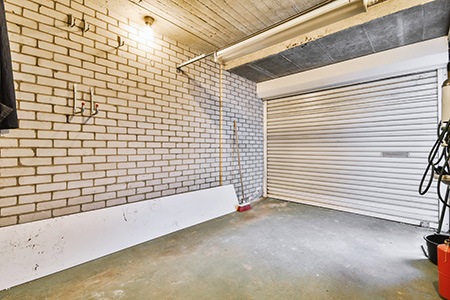
Several types of tandem garages are available, so you can take your pick depending on the size of your property and how many vehicles you plan to park on it.
Standard Tandem Garage
A standard tandem garage is a simple design accommodating two cars parked end-to-end. It is the most common type of tandem garage and provides homeowners with extra storage space or even a workspace.
The standard tandem garage length is typically 36 feet, which means it can comfortably accommodate two cars without feeling cramped. This kind of garage plan gives you more room to move around compared to traditional garages. In the latter, you can only park cars side by side.
Side-By-Side Tandem Garage
A side-by-side tandem garage is a tandem garage where two vehicles are parked next to each other in the same direction. This type of garage provides more space for vehicle storage (starting with 3 or 4 vehicles) while maintaining a relatively small footprint compared to traditional garages.
One potential drawback of side-by-side tandem garages is that maneuvering in and out can be challenging since there isn't much clearance between the parked vehicles.
However, you can mitigate this by carefully planning the layout of your garage to ensure that there's plenty of room around all sides.
Stacked Tandem Garage
Another type of tandem garage is the stacked tandem garage, which consists of two levels of parking spaces. This option can be ideal for properties with limited space as it allows you to park multiple cars in a smaller footprint.
The top level is accessed through a ramp or lift system, and vehicles on the bottom level can drive straight out. Stacked tandem garages are also suitable for maximizing car storage solutions without compromising floor space.
Two-Story Tandem Garage
A two-story tandem garage is a popular type of tandem garage that offers even more space-saving benefits. These garages have the same width as a one-car garage but are deeper, allowing you to park two or more cars in tandem on both levels.
Because of this feature, you can fit more cars into your garage without increasing their footprint on your lot. Either that or you can create a bonus room or attic space above.
Another advantage of two-story tandem garages is their potential for additional storage or workspace. With the right design, the upper level of these garages can be used as a loft area or workshop while still providing plenty of parking below.
Additional storage makes them an excellent choice for homeowners who need extra room for hobbies or storage but do not want to sacrifice valuable parking space.
Factors to Consider When Choosing a Tandem Garage
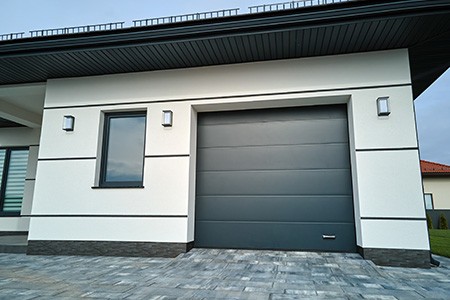
Besides asking what is a tandem garage, consider lot size, local building codes, budget, design considerations, number of cars, and access/exit points when choosing a tandem garage.
Lot Size
The lot size is a crucial factor to consider when choosing a tandem garage. The size of your lot will determine the type and size of the tandem garage you can build.
If your lot is narrow, a tandem garage may be an excellent option as it takes up less space than two separate garages.
Bear in mind that local building codes may also dictate the minimum and maximum allowable sizes for garages on residential properties. Ensure you research the rules and regulations in your area before deciding to build a tandem garage.
Local Building Codes
As you plan to build or convert a garage into a tandem garage, it is important to understand local building codes. Building regulations, construction codes, zoning ordinances, and permit requirements vary by location.
Compliance with these codes ensures that your project meets inspection standards, safety regulations, and structural requirements. For instance, parking regulations may influence the size of your tandem garage and how many cars it can accommodate.
To ensure compliance with building codes, do not hesitate to consult with contractors before starting any construction work on your property.
These professionals will provide insight into what is expected within your jurisdiction so that you do not encounter regulatory issues in the future.
Budget
Budget is an essential factor to keep in mind when choosing a tandem garage. The cost of building a tandem garage can vary depending on several factors, including size, design, construction materials, and features.
However, in most cases, the cost of building a tandem garage is less than that of a double garage because tandem models are narrower. Moreover, you should also consider property value as it impacts the budget for constructing a tandem garage.
Consider property layout if you live in an area where there are stringent building codes and regulations on lot sizes that may affect your decision. Check out your local zoning rules throughout your planning stages to avoid breaking any law or regulation.
Design Considerations
When choosing a tandem garage, it is crucial to consider design and functionality. Garage size options depend on the number of vehicles you plan to store and factors such as lot size, budget, and local building codes.
Another important aspect of garage design is curb appeal. As we previously mentioned, tandem garages can increase property value if you design them in a way that complements the look of your home.
For example, adding windows or decorative elements can enhance the visual impact of your garage while also improving ventilation and natural light sources inside.
Number of Cars
One of the most significant factors to consider when choosing a tandem garage is the number of cars you want to accommodate. Tandem garages are designed to hold between two and four vehicles, depending on their dimensions and arrangement.
If you have multiple cars, a tandem garage can be an ideal solution to your parking needs as it allows for increased storage space without requiring extra square footage in your home.
Bear in mind that the size of your vehicles also plays a role in determining how many cars you can fit into a tandem garage comfortably.
Access & Exit Points
When deciding to build a tandem garage, it is critical to consider access and exit points. Tandem garages offer only one entry point for all vehicles. This situation can be challenging if the arrangement is shared by multiple drivers with different schedules.
Coordinate with everyone sharing the space and find a system for who parks where and when to avoid parking conflicts. Additionally, maneuvering around other parked cars in a tandem garage can be tricky due to limited mobility.
Proper planning of access and exit points will help maximize the available floor space while maintaining easy vehicle accessibility within the garage.
Installing auto lifts or rearranging storage units may also provide alternative ways for cars to enter or leave without disrupting parked vehicles' orderliness in a tandem setup.
So, What is a Tandem Garage?
Tandem garages can also provide additional storage or workspace on one side. There are different types and sizes of tandem garages available, so you must consider factors such as lot size and design considerations before choosing one.
So, what is a tandem garage? A tandem garage is an excellent solution for homeowners with limited space who need to park multiple vehicles. It is similar to a double garage but the cars are arranged longitudinally instead of laterally, allowing all the cars to align with each other.



